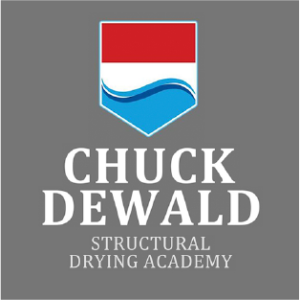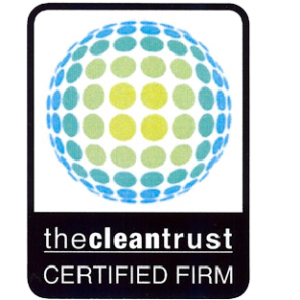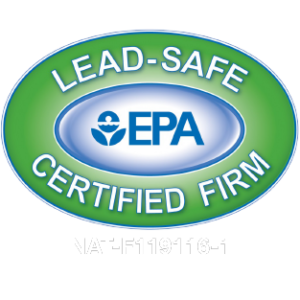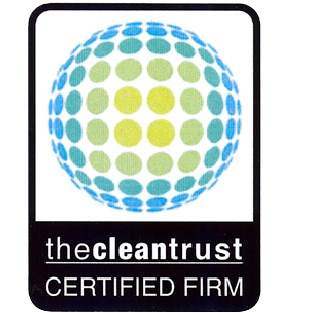Water in the wrong places can cause more damage than any other threat.
Water damage can be the result of weather, frozen/burst pipes, plumbing, or fire aftermath. Flooding — even just a small leak — can result in structural damage, mold, and mildew if not taken care of immediately, especially in the unpredictable Midwest weather climate. If your home or business has suffered water damage, Revive Restoration can make it right again. You can also read our tips on how to prevent water damage in the first place.
What to do if you experience water and sewer damage:
If it’s a plumbing/sewer issue, turn off the water at the main if you can do so safely.
Fill out our contact form or call Revive Restoration right away. The faster you act, the more money you’ll save.
When we get there, we’ll work to make it right again.
Frequently Asked Questions About Water Damage
Does homeowners insurance cover water damage?
Water damage to your home may or may not be covered by your insurance, depending on your specific policy.
Generally, home insurance covers “sudden internal” water damage. This accounts for things like a leaking roof, toilet or sink overflow, and vandalism.
If water damage is the result of a flood or any sort of neglect on your part, however, your homeowners insurance policy usually won’t cover the repair costs.
It’s best to get in touch with your insurance provider directly to confirm what is and isn’t protected by your current policy. You can typically add extra insurance coverage for floods in $5,000 increments for about $50 a year.
How much does it cost to repair water damage?
Water damage costs vary greatly depending on the severity of the damage to your property. Generally, the sooner you find and report a problem to a professional, the less it will cost to repair your home or business.
Every individual case of water damage is unique, and it’s difficult to predict every associated cost until the repair is underway. If you have specific questions, don’t hesitate to reach out to us!
How long does the water damage repair process take?
We wish we could give you a straight answer, but the truth is that the amount of time it takes to repair water damage to your home or business depends on the circumstances each individual scenario. Some cases of water damage can be easily repaired in less than a day, while other severe instances will require up to a few weeks to completely restore.
The biggest factors are the size of the affected area and the amount of time the damage has been present. For example, if you catch a small leak right away, we should be able to repair within the same day. If, however, your basement floods while you’re gone on vacation and you don’t realize it until the water has completely soaked through your drywall, the process will take longer.
We’ll work with you at the start of your restoration process to come up with an anticipated timeline so that you can plan accordingly.
How quickly can water damage happen?
Water damage can happen extremely quickly. Your home or business will experience initial effects right away, like visible damage to personal property and behind-the-scenes wear on materials like drywall and carpet.
If left untreated, water damage can cause further problems down the line. Most commonly seen is mold accumulation, but structural damage to the integrity of your building can also occur.
It’s vital that you get in touch with a professional to take care of any water damage to your home or business as soon as you notice it. We’re proud to have the best response time in the industry, and we’re available 24/7 for your restoration needs!
Does water damage get worse over time?
Immediate effects of water damage can be noticed as soon as a leak or flood occurs, and if left untreated, the damage will quickly get worse over time.
Mold is a common problem when water damage is not noticed and taken care of promptly. In addition, leaving water damage in the walls or ceiling of your home and business has the potential to cause severe structural damage that can be difficult to repair.
For this reason, it’s important to reach out to a professional to restore your building immediately after you notice any signs of water damage. We’re available 24/7!
What are the signs of water damage?
While water damage can cause immediate damage to your home or business, it’s not always easy to notice the subtle signs that it’s happening. Some events like major floods are impossible to miss, but if you’re dealing with a smaller water damage problem here are some things to look out for:
- A damp smell, especially if accompanied by early signs of mold that might look like spots of dust or dirt.
- Cold rooms that have a difficult time retaining heat. This not only increases your energy costs — it’s also an indicator that the inside of your walls might be damp.
- Discoloration on ceilings or walls, especially if it appears in streaks.
- A sound of dripping or running water in a place you usually don’t hear it, which can indicate that water damage is happening behind-the-scenes.
How can I prevent water damage in my home or business?
Sometimes water damage is inevitable, like when a massive storm strikes with little warning. Often, though, there are steps you can take to prevent your home or business from being damaged in the first place.
- Regularly check for cracks and leaks. It doesn’t take a large opening in your roof, ceiling, or walls for water to get through and cause damage. If you notice anything that looks unusual, get it checked out immediately.
- Clean your gutters at least twice a year. If water can properly drain from your roof, the chances of it building up and leaking into your home are quite small.
- Keep your sump pump in working condition. Basement sump pumps do wonders for preventing floods from damaging your lowest level by keeping water levels low. Perform annual sump pump maintenance checks to make sure yours is always up to the task. It’s also a good idea to have a backup sump pump in case something goes wrong with the first one — we recommend a battery-operated unit in case the power goes out.
- Make sure your yard allows water to drain away from your home. Certain types of landscaping can help reduce the risk of a flood damaging your home by helping water drain away and out of your yard.
Why are frozen pipes dangerous?
Frozen pipes pose a significant water damage risk to homes and businesses. When water freezes, it expands, creating pressure that causes your plastic or metal pipes to burst open. You might not notice at first because the ice is held in place, but when the temperatures warm up again, all that frozen water will melt and leak into your space. Your home or business might experience severe damage before you even realize there is a problem.
What pipes are most at risk of freezing in the winter?
Not every pipe in your home or business has an equal risk of freezing when temperatures drop in the winter. The ones you should pay close attention to are those that run against exterior walls with little to no insulation; those in uninsulated indoor spaces like attics, garages, and basements; and those that are directly exposed to the cold, like swimming pool or water sprinkler supply lines.
How do I prevent frozen pipes?
To prevent frozen pipes from wreaking havoc in your home or business, you should follow a few steps:
- Keep exterior doors to uninsulated parts of your home firmly closed, set your thermostat at the same temperature during the day and night, and seal up any cracks or holes you notice right away to keep the indoor temperature steady.
- Run a small amount of water through pipes you think might be at risk.
- Open cabinet doors regularly so that warm air from the other rooms in your home can circulate around bathroom and kitchen sink plumbing.
- Consider insulating any areas that currently aren’t.
What do I do if I have a frozen pipe in my home or business?
If you believe you have a frozen pipe, the best thing to do is call a professional restoration company right away. They will be able to tackle the issue quickly without risking further damage, especially if the pipe is difficult to access or has already burst.
If a pipe is frozen but hasn’t yet burst, you might be able to thaw it yourself by keeping the faucet running and applying heat with an electric heating pad or hair dryer. It’s important to be extremely careful with these electric devices near water, so we generally don’t recommend doing this on your own.
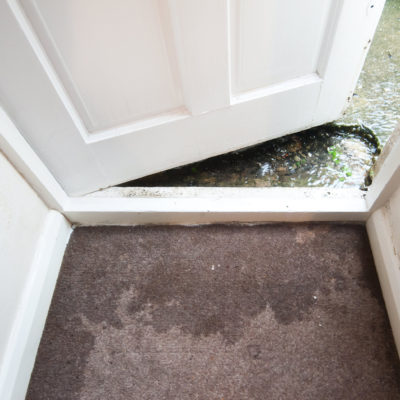
Our Process
- We will move the contents of your space to a dry area for you.
- We document the water damage for you.
- We use pictures and psychometric reading in case you file an insurance claim.
- If you do file a claim, we can help you navigate the process.
- We physically extract the water using the most advanced equipment on the market.
- We use Thermal Imaging and Hygrometers to find and measure how wet the structure is.
- Then we set up drying chambers to control the area we are drying as quickly as possible.
- We use the best dehumidifiers to maximize evaporation while using less energy.
- We make sure to use the correct air mover set up per class of water.
- Moisture Mapping: We diagram the chamber and map out exactly what is wet. Then we set moisture goals and track the progress, so you and your insurance company can see precisely how we dried your space.
At Revive Restoration, we’re experts.
We are IICRC Certified to restore properties damaged by water and sewage.
Learn more about our water damage restoration process:
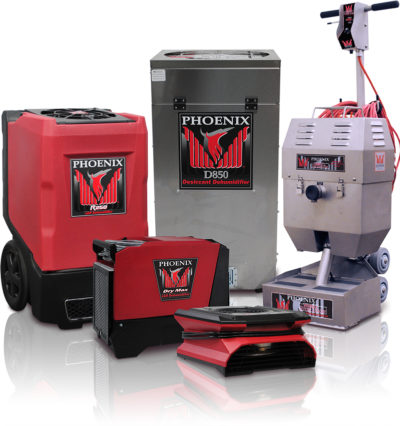
We use top of the line equipment from ThermaStor to help dry your home to prevent mold damage and to make sure no further damage ensues from water in your home.
We track each water damage restoration project from start to finish in a program called DASH.
We will send you a link immediately — so you can see in real time how your home or business is drying. Revive Restoration has a completely transparent model, and we're happy to show you anything you want to know.
Our goal is to dry your space without removing materials unnecessarily.
Other companies often tear our materials automatically, needlessly increasing cost and the time it takes to get your space back to its original condition. By acting quickly, we can save you time and money by drying materials in place.
The secret is to know what can be saved and what must be replaced.
Most materials can be dried and restored without needing to be replaced unless the source of water is contaminated or if the damage has passed certain timelines, in order to protect the structural integrity of a building.
Sewer water never belongs inside a property.
If you have sewer damage, fill out our contact form or call us immediately. It is strongly recommended to not attempt to clean up sewage without proper safety equipment.
Sewer damage can be the result of weather or plumbing issues. Any sewage inside a home or business is harmful to its occupants.
- All porous materials must be replaced due to bacteria and bloodborne pathogens contained in the sewage.
- Many non-porous materials can be cleaned, sanitized, and deodorized without needing to be replaced. Revive Restoration has the tools and expertise to return your items to pre-loss condition.
Midwest winters can be especially tough on local homes and businesses.
Winters in Wisconsin, Minnesota, and neighboring states are not for the faint of heart. Between feet of heavy snow and unpredictable temperatures that can plummet below zero on a moment’s notice, the risk of seasonal damage to your home or business is high.
That’s why we’re here. At Revive Restoration, we have years of experience navigating the ins and outs of the Midwest’s changing seasons — and we know what it’s like to deal with cold-weather problems ourselves.
If winter does cause something to go wrong? We’re always on call to make it right again.
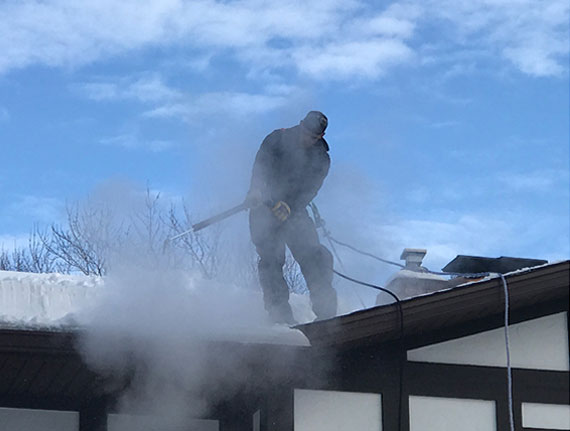
Ice Dams
We’re no stranger to ice dams — in Wisconsin alone, we remove dozens of the dangerous build-ups from the roofs of local homes and businesses in a single winter. An ice dam occurs when snow at the top of your roof melts and runs to the edges, where additional snow and ice block it from draining away. Over time, this winter mix can grow into a heavy ridge that puts your roof at an increased risk of water leaks, mold, and structural damage.
Read a few tips to avoid ice dams this season, and don’t hesitate to reach out if you spot one taking shape on your home or business.

Frozen Pipes
Frozen pipes are one of the most common — and most damaging — home and business problems we see in the winter. When your pipes don’t have proper insulation and the temperatures get low, water can freeze inside of them. As this ice expands, it can cause your pipes to burst, leaving you to deal with a major water leak once things warm up again.
Thankfully, you can prevent frozen pipes in your home or business in a few simple ways. And if you do discover a frozen or burst pipe, give us a call — we’ll be there to fix it in minutes.
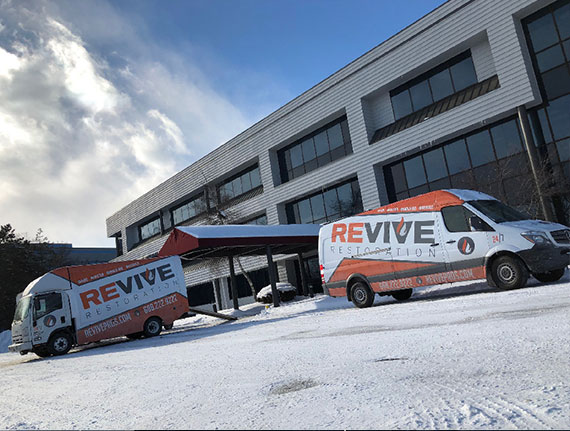
Snow Damage
Snow can build up, not only on your home or business’s roof, but also on your surrounding property. If a particularly strong storm comes through, it can send tree branches and other debris crashing into your building.
The best way to prevent these problems is to keep your landscaping trimmed, but sometimes no preparation can stand up to Mother Nature. If winter does get the best of you, don’t worry — we’re here to help.
Other Midwest Winter Damage
Ice dams, frozen pipes, and heavy snow aren’t the only winter risks in the Midwest — your home or business can also suffer from a range of other seasonal problems. Whether it’s exterior cracks, poor insulation, or anything else that the cold weather brings, Revive is here to help you make it right.
- Water Damage
-
Water in the wrong places can cause more damage than any other threat.
Water damage can be the result of weather, frozen/burst pipes, plumbing, or fire aftermath. Flooding — even just a small leak — can result in structural damage, mold, and mildew if not taken care of immediately, especially in the unpredictable Midwest weather climate. If your home or business has suffered water damage, Revive Restoration can make it right again. You can also read our tips on how to prevent water damage in the first place.
What to do if you experience water and sewer damage:
1If it’s a plumbing/sewer issue, turn off the water at the main if you can do so safely.
2Fill out our contact form or call Revive Restoration right away. The faster you act, the more money you’ll save.
3When we get there, we’ll work to make it right again.
Frequently Asked Questions About Water Damage
Does homeowners insurance cover water damage?
Water damage to your home may or may not be covered by your insurance, depending on your specific policy.
Generally, home insurance covers “sudden internal” water damage. This accounts for things like a leaking roof, toilet or sink overflow, and vandalism.
If water damage is the result of a flood or any sort of neglect on your part, however, your homeowners insurance policy usually won’t cover the repair costs.
It’s best to get in touch with your insurance provider directly to confirm what is and isn’t protected by your current policy. You can typically add extra insurance coverage for floods in $5,000 increments for about $50 a year.
How much does it cost to repair water damage?
Water damage costs vary greatly depending on the severity of the damage to your property. Generally, the sooner you find and report a problem to a professional, the less it will cost to repair your home or business.
Every individual case of water damage is unique, and it’s difficult to predict every associated cost until the repair is underway. If you have specific questions, don’t hesitate to reach out to us!
How long does the water damage repair process take?
We wish we could give you a straight answer, but the truth is that the amount of time it takes to repair water damage to your home or business depends on the circumstances each individual scenario. Some cases of water damage can be easily repaired in less than a day, while other severe instances will require up to a few weeks to completely restore.
The biggest factors are the size of the affected area and the amount of time the damage has been present. For example, if you catch a small leak right away, we should be able to repair within the same day. If, however, your basement floods while you’re gone on vacation and you don’t realize it until the water has completely soaked through your drywall, the process will take longer.
We’ll work with you at the start of your restoration process to come up with an anticipated timeline so that you can plan accordingly.
How quickly can water damage happen?
Water damage can happen extremely quickly. Your home or business will experience initial effects right away, like visible damage to personal property and behind-the-scenes wear on materials like drywall and carpet.
If left untreated, water damage can cause further problems down the line. Most commonly seen is mold accumulation, but structural damage to the integrity of your building can also occur.
It’s vital that you get in touch with a professional to take care of any water damage to your home or business as soon as you notice it. We’re proud to have the best response time in the industry, and we’re available 24/7 for your restoration needs!
Does water damage get worse over time?
Immediate effects of water damage can be noticed as soon as a leak or flood occurs, and if left untreated, the damage will quickly get worse over time.
Mold is a common problem when water damage is not noticed and taken care of promptly. In addition, leaving water damage in the walls or ceiling of your home and business has the potential to cause severe structural damage that can be difficult to repair.
For this reason, it’s important to reach out to a professional to restore your building immediately after you notice any signs of water damage. We’re available 24/7!
What are the signs of water damage?
While water damage can cause immediate damage to your home or business, it’s not always easy to notice the subtle signs that it’s happening. Some events like major floods are impossible to miss, but if you’re dealing with a smaller water damage problem here are some things to look out for:
- A damp smell, especially if accompanied by early signs of mold that might look like spots of dust or dirt.
- Cold rooms that have a difficult time retaining heat. This not only increases your energy costs — it’s also an indicator that the inside of your walls might be damp.
- Discoloration on ceilings or walls, especially if it appears in streaks.
- A sound of dripping or running water in a place you usually don’t hear it, which can indicate that water damage is happening behind-the-scenes.
How can I prevent water damage in my home or business?
Sometimes water damage is inevitable, like when a massive storm strikes with little warning. Often, though, there are steps you can take to prevent your home or business from being damaged in the first place.
- Regularly check for cracks and leaks. It doesn’t take a large opening in your roof, ceiling, or walls for water to get through and cause damage. If you notice anything that looks unusual, get it checked out immediately.
- Clean your gutters at least twice a year. If water can properly drain from your roof, the chances of it building up and leaking into your home are quite small.
- Keep your sump pump in working condition. Basement sump pumps do wonders for preventing floods from damaging your lowest level by keeping water levels low. Perform annual sump pump maintenance checks to make sure yours is always up to the task. It’s also a good idea to have a backup sump pump in case something goes wrong with the first one — we recommend a battery-operated unit in case the power goes out.
- Make sure your yard allows water to drain away from your home. Certain types of landscaping can help reduce the risk of a flood damaging your home by helping water drain away and out of your yard.
Why are frozen pipes dangerous?
Frozen pipes pose a significant water damage risk to homes and businesses. When water freezes, it expands, creating pressure that causes your plastic or metal pipes to burst open. You might not notice at first because the ice is held in place, but when the temperatures warm up again, all that frozen water will melt and leak into your space. Your home or business might experience severe damage before you even realize there is a problem.
What pipes are most at risk of freezing in the winter?
Not every pipe in your home or business has an equal risk of freezing when temperatures drop in the winter. The ones you should pay close attention to are those that run against exterior walls with little to no insulation; those in uninsulated indoor spaces like attics, garages, and basements; and those that are directly exposed to the cold, like swimming pool or water sprinkler supply lines.
How do I prevent frozen pipes?
To prevent frozen pipes from wreaking havoc in your home or business, you should follow a few steps:
- Keep exterior doors to uninsulated parts of your home firmly closed, set your thermostat at the same temperature during the day and night, and seal up any cracks or holes you notice right away to keep the indoor temperature steady.
- Run a small amount of water through pipes you think might be at risk.
- Open cabinet doors regularly so that warm air from the other rooms in your home can circulate around bathroom and kitchen sink plumbing.
- Consider insulating any areas that currently aren’t.
What do I do if I have a frozen pipe in my home or business?
If you believe you have a frozen pipe, the best thing to do is call a professional restoration company right away. They will be able to tackle the issue quickly without risking further damage, especially if the pipe is difficult to access or has already burst.
If a pipe is frozen but hasn’t yet burst, you might be able to thaw it yourself by keeping the faucet running and applying heat with an electric heating pad or hair dryer. It’s important to be extremely careful with these electric devices near water, so we generally don’t recommend doing this on your own.

Our Process
- We will move the contents of your space to a dry area for you.
- We document the water damage for you.
- We use pictures and psychometric reading in case you file an insurance claim.
- If you do file a claim, we can help you navigate the process.
- We physically extract the water using the most advanced equipment on the market.
- We use Thermal Imaging and Hygrometers to find and measure how wet the structure is.
- Then we set up drying chambers to control the area we are drying as quickly as possible.
- We use the best dehumidifiers to maximize evaporation while using less energy.
- We make sure to use the correct air mover set up per class of water.
- Moisture Mapping: We diagram the chamber and map out exactly what is wet. Then we set moisture goals and track the progress, so you and your insurance company can see precisely how we dried your space.
At Revive Restoration, we’re experts.
We are IICRC Certified to restore properties damaged by water and sewage.
Learn more about our water damage restoration process:
We use top of the line equipment from ThermaStor to help dry your home to prevent mold damage and to make sure no further damage ensues from water in your home.
We track each water damage restoration project from start to finish in a program called DASH.
We will send you a link immediately — so you can see in real time how your home or business is drying. Revive Restoration has a completely transparent model, and we're happy to show you anything you want to know.
Our goal is to dry your space without removing materials unnecessarily.
Other companies often tear our materials automatically, needlessly increasing cost and the time it takes to get your space back to its original condition. By acting quickly, we can save you time and money by drying materials in place.
The secret is to know what can be saved and what must be replaced.
Most materials can be dried and restored without needing to be replaced unless the source of water is contaminated or if the damage has passed certain timelines, in order to protect the structural integrity of a building.
- Sewer Damage
-
Sewer water never belongs inside a property.
If you have sewer damage, fill out our contact form or call us immediately. It is strongly recommended to not attempt to clean up sewage without proper safety equipment.
Sewer damage can be the result of weather or plumbing issues. Any sewage inside a home or business is harmful to its occupants.
- All porous materials must be replaced due to bacteria and bloodborne pathogens contained in the sewage.
- Many non-porous materials can be cleaned, sanitized, and deodorized without needing to be replaced. Revive Restoration has the tools and expertise to return your items to pre-loss condition.
- Winter Damage
-
Midwest winters can be especially tough on local homes and businesses.
Winters in Wisconsin, Minnesota, and neighboring states are not for the faint of heart. Between feet of heavy snow and unpredictable temperatures that can plummet below zero on a moment’s notice, the risk of seasonal damage to your home or business is high.
That’s why we’re here. At Revive Restoration, we have years of experience navigating the ins and outs of the Midwest’s changing seasons — and we know what it’s like to deal with cold-weather problems ourselves.
If winter does cause something to go wrong? We’re always on call to make it right again.

Ice Dams
We’re no stranger to ice dams — in Wisconsin alone, we remove dozens of the dangerous build-ups from the roofs of local homes and businesses in a single winter. An ice dam occurs when snow at the top of your roof melts and runs to the edges, where additional snow and ice block it from draining away. Over time, this winter mix can grow into a heavy ridge that puts your roof at an increased risk of water leaks, mold, and structural damage.
Read a few tips to avoid ice dams this season, and don’t hesitate to reach out if you spot one taking shape on your home or business.

Frozen Pipes
Frozen pipes are one of the most common — and most damaging — home and business problems we see in the winter. When your pipes don’t have proper insulation and the temperatures get low, water can freeze inside of them. As this ice expands, it can cause your pipes to burst, leaving you to deal with a major water leak once things warm up again.
Thankfully, you can prevent frozen pipes in your home or business in a few simple ways. And if you do discover a frozen or burst pipe, give us a call — we’ll be there to fix it in minutes.

Snow Damage
Snow can build up, not only on your home or business’s roof, but also on your surrounding property. If a particularly strong storm comes through, it can send tree branches and other debris crashing into your building.
The best way to prevent these problems is to keep your landscaping trimmed, but sometimes no preparation can stand up to Mother Nature. If winter does get the best of you, don’t worry — we’re here to help.
Other Midwest Winter Damage
Ice dams, frozen pipes, and heavy snow aren’t the only winter risks in the Midwest — your home or business can also suffer from a range of other seasonal problems. Whether it’s exterior cracks, poor insulation, or anything else that the cold weather brings, Revive is here to help you make it right.

Help is on the way
Non-Emergency
Fill out our form and we will reply
within four business hours.
Emergency
Call 608.222.9222 to address your issue right away. If our phone lines are experiencing high volume, our form is a great way to get ahold of us. We monitor it 24/7 and will get back to you ASAP!
"*" indicates required fields






